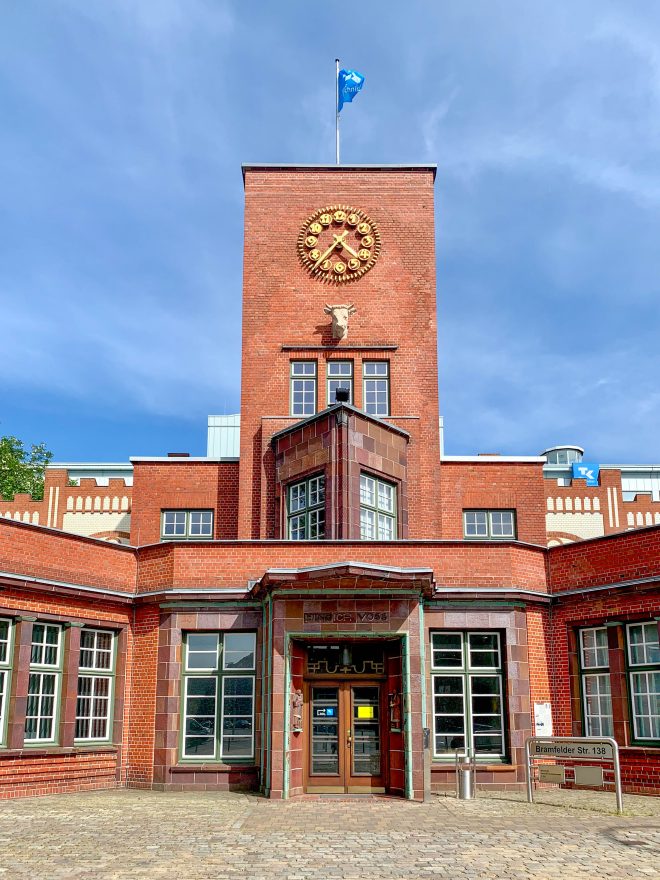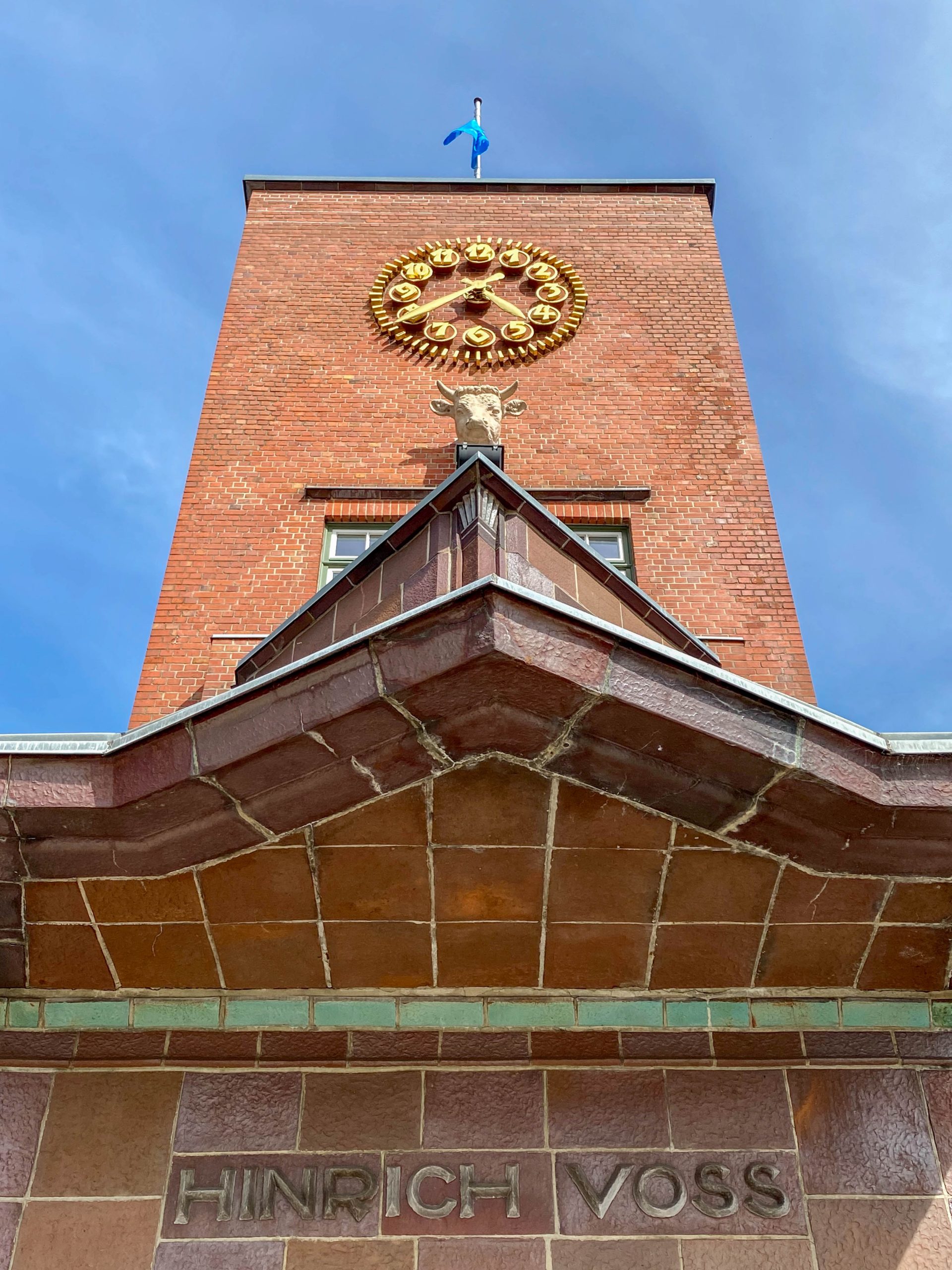
Voss Margarine Factory, 1925-1926. Architects: Henry Grell, Peter Pruter. Photo: Daniela Christmann
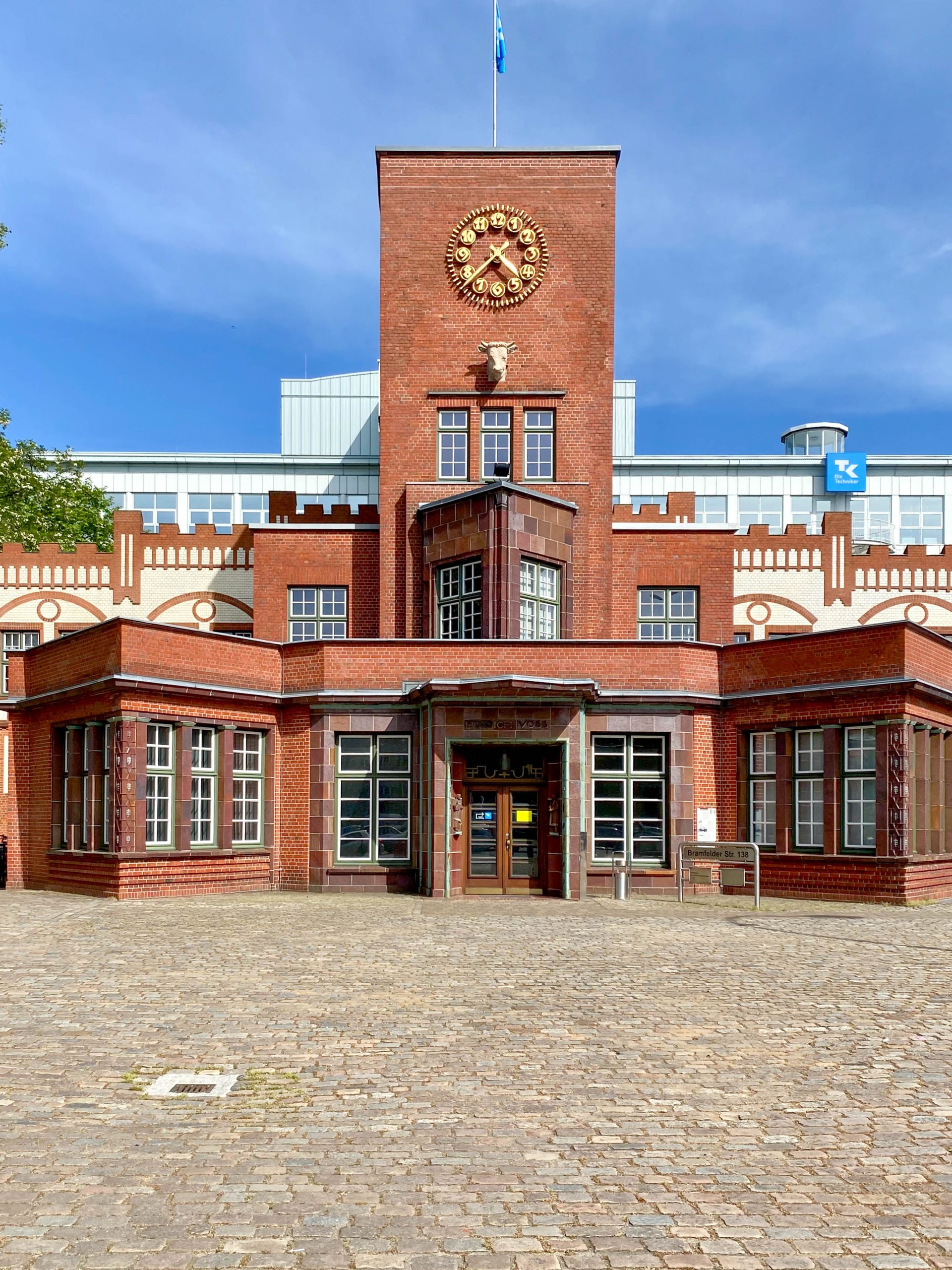
Voss Margarine Factory, 1925-1926. Architects: Henry Grell, Peter Pruter. Photo: Daniela Christmann
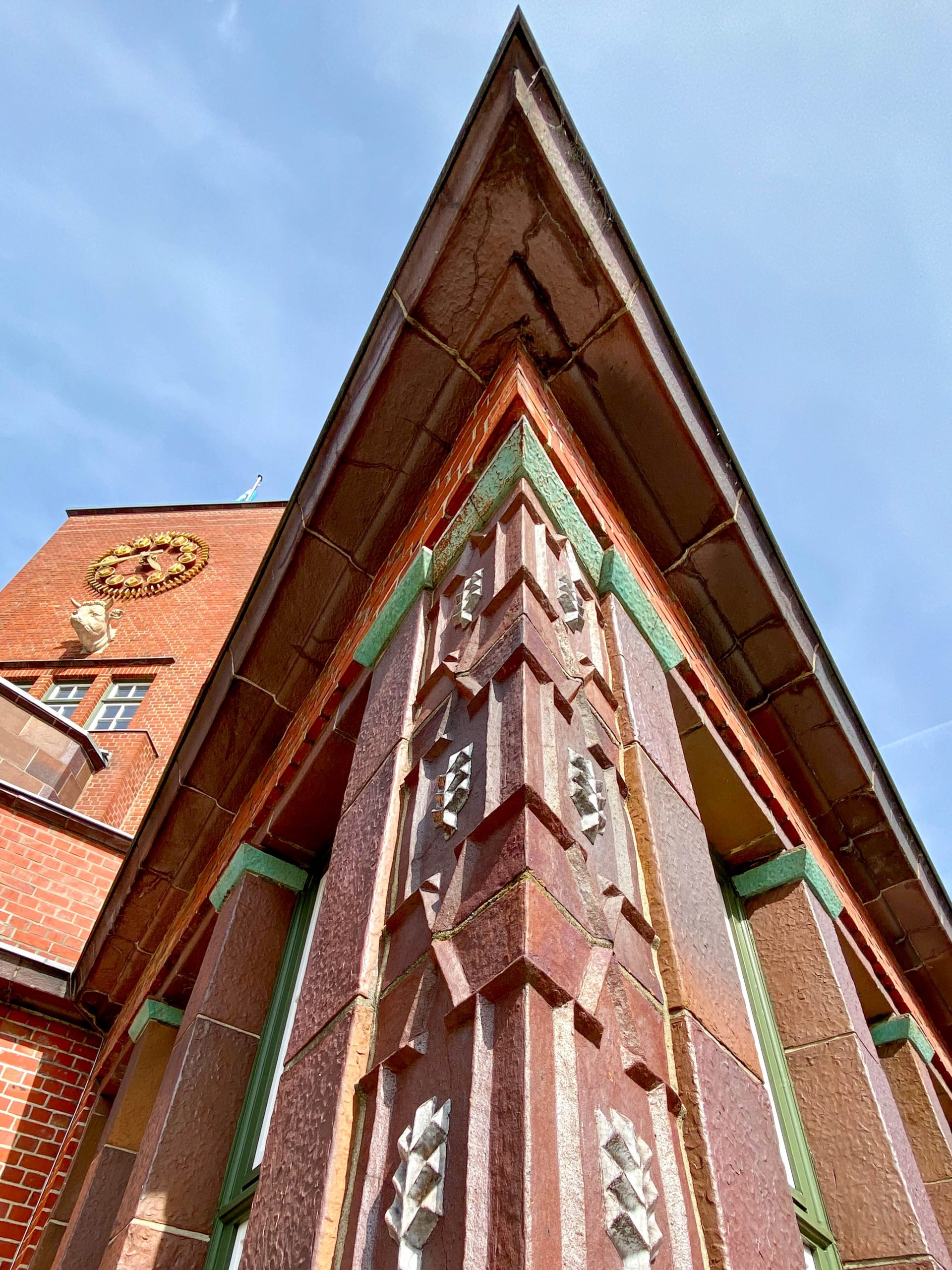
Voss Margarine Factory, 1925-1926. Architects: Henry Grell, Peter Pruter. Photo: Daniela Christmann
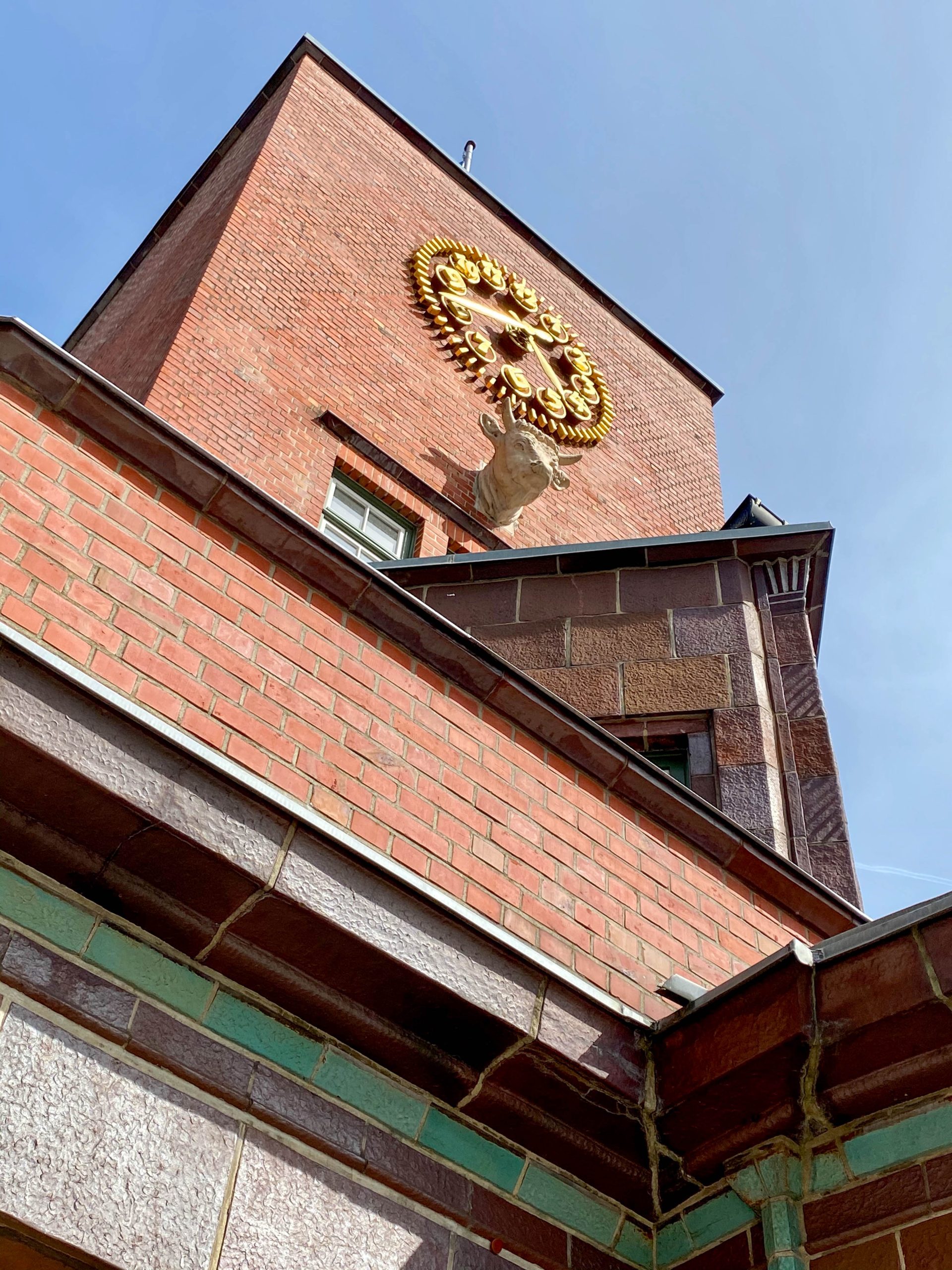
Voss Margarine Factory, 1925-1926. Architects: Henry Grell, Peter Pruter. Photo: Daniela Christmann
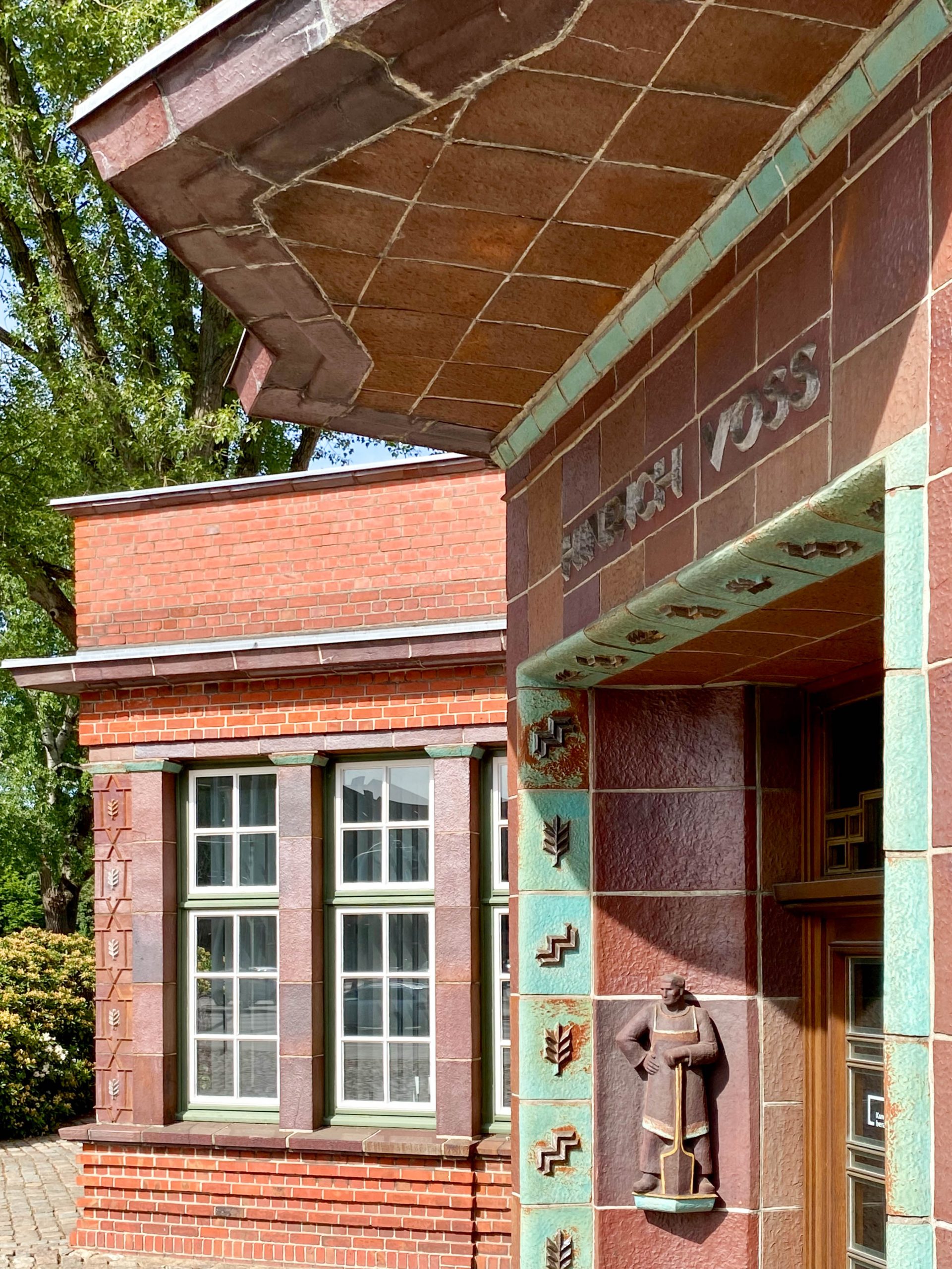
Voss Margarine Factory, 1925-1926. Architects: Henry Grell, Peter Pruter. Photo: Daniela Christmann
1925 – 1926
Architects: Henry Grell, Peter Pruter
Bramfelder Strasse 138, Hamburg, Germany
Between 1925 and 1926, the entrance building of the former margarine factory Voss was completed in Hamburg-Barmbek in the style of brick expressionism to plans by architects Henry Grell and Peter Pruter.
Background
In 1904, Hinrich Voß founded a margarine factory in Hamburg-Barmbek.
In 1910, he added a factory building to which the entrance structure was attached in the mid-twenties.
While the factory building extended along today’s Habichtstraße, the new entrance structure was aligned with the street intersection.
Building
The inscription Hinrich Voss is located above the main portal.
The ceramics, the cow’s head and the clock face are designs by the sculptor Richard Kuöhl, whose work also adorns the Chilehaus in Hamburg.
The ceramics were executed by Richard Blumenfeld AG, which was a leader in the production of architectural ceramics in the period between the world wars.
At no time was milk processed in the margarine factory. The head is representative of the artificial cow that provided inexpensive spreadable fat after the invention of margarine by Hippolyte Mège-Mouriès.
Kuöhl’s cow head is made of ceramic, hollow inside and weighs about 70 kg.
Restoration
On April 22, 2013, the head detached from the facade and fell onto the canopy below.
The broken head was subsequently restored and exhibited in the rooms of the health insurance company.
A copy of the original head was made of cast stone and has been anchored in the facade since September 2014.
Two sculptural figures of a worker and an employee are located to the right and left of the entrance.
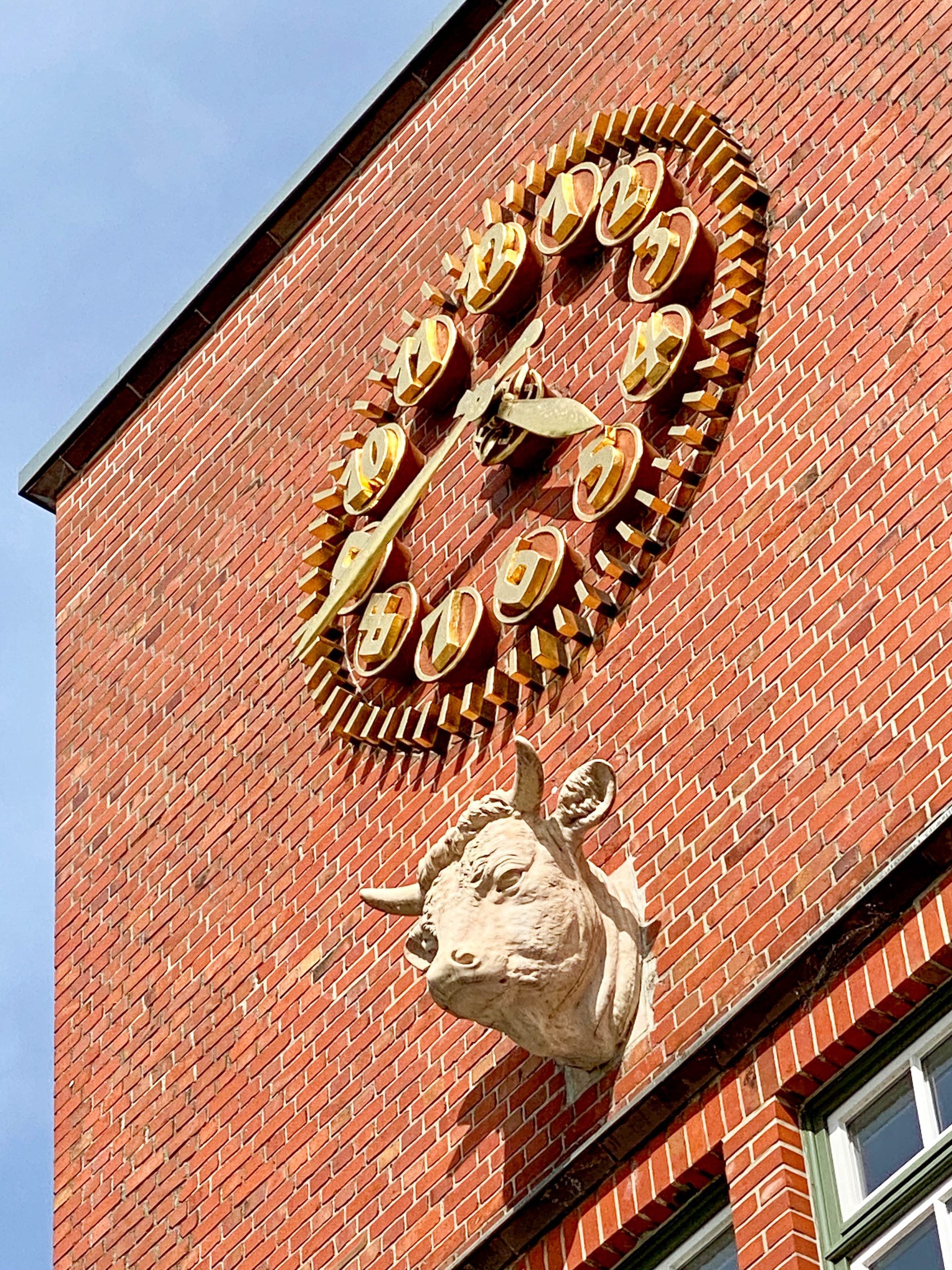
Voss Margarine Factory, 1925-1926. Architects: Henry Grell, Peter Pruter. Photo: Daniela Christmann
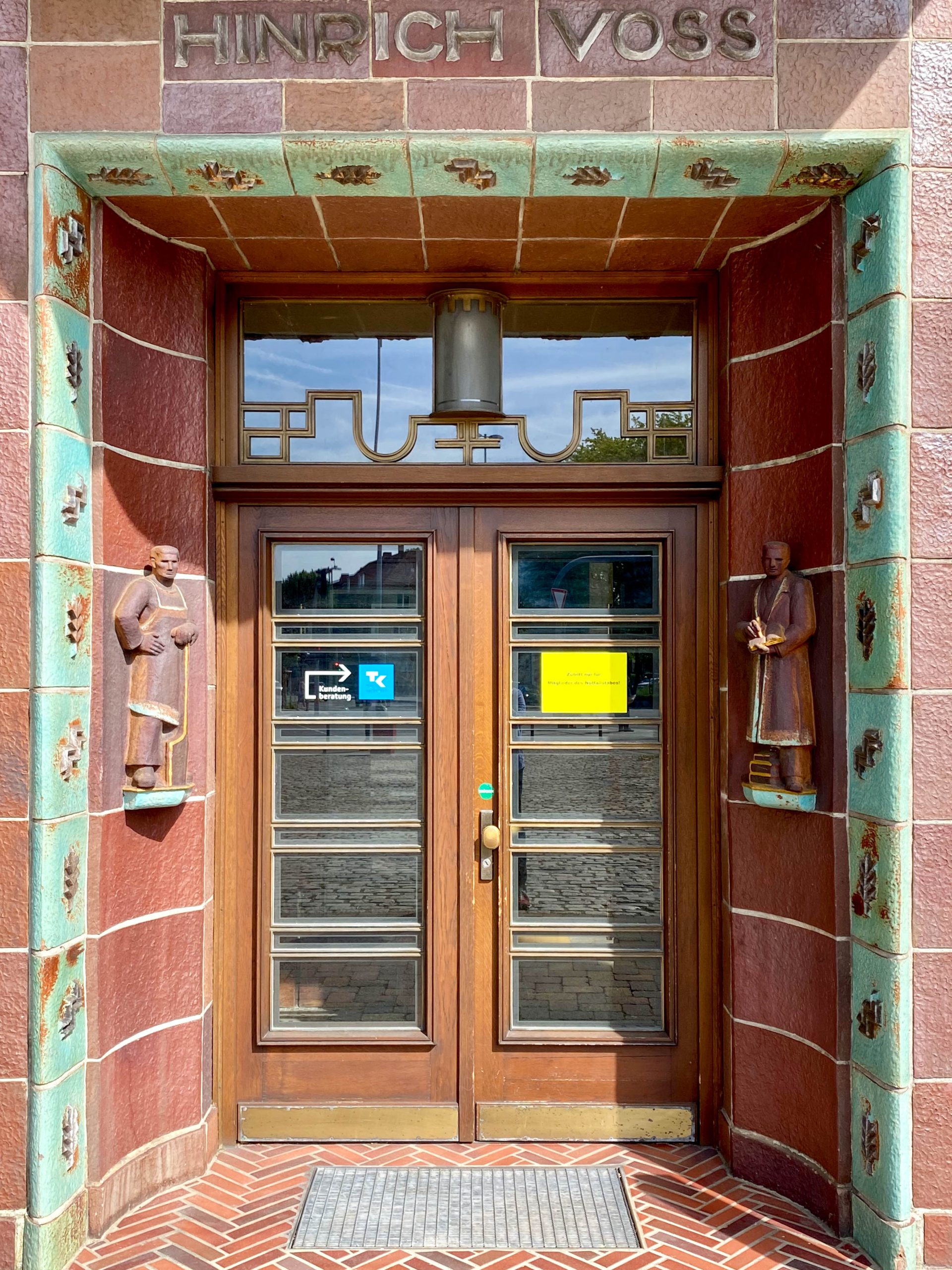
Voss Margarine Factory, 1925-1926. Architects: Henry Grell, Peter Pruter. Photo: Daniela Christmann
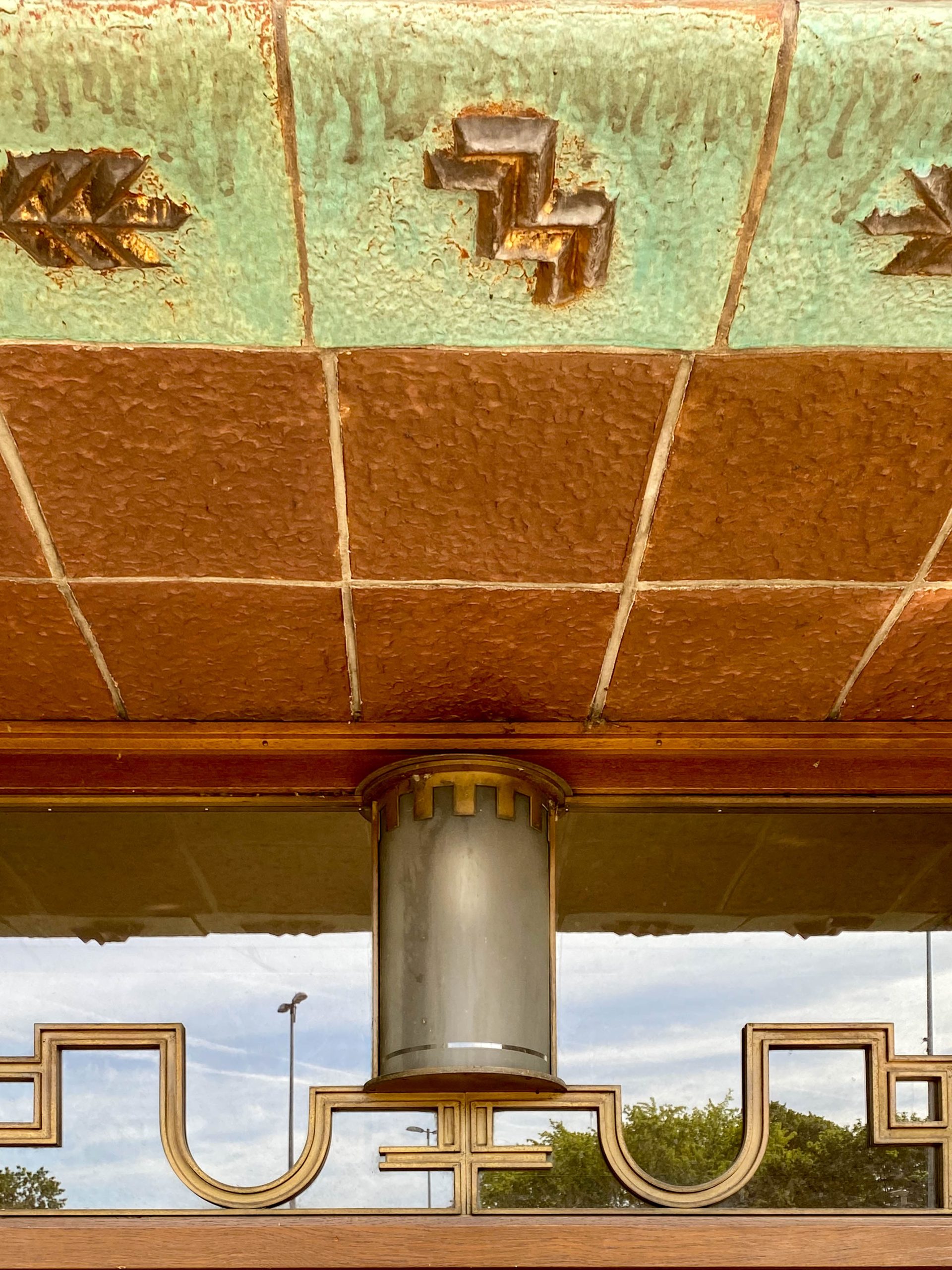
Voss Margarine Factory, 1925-1926. Architects: Henry Grell, Peter Pruter. Photo: Daniela Christmann
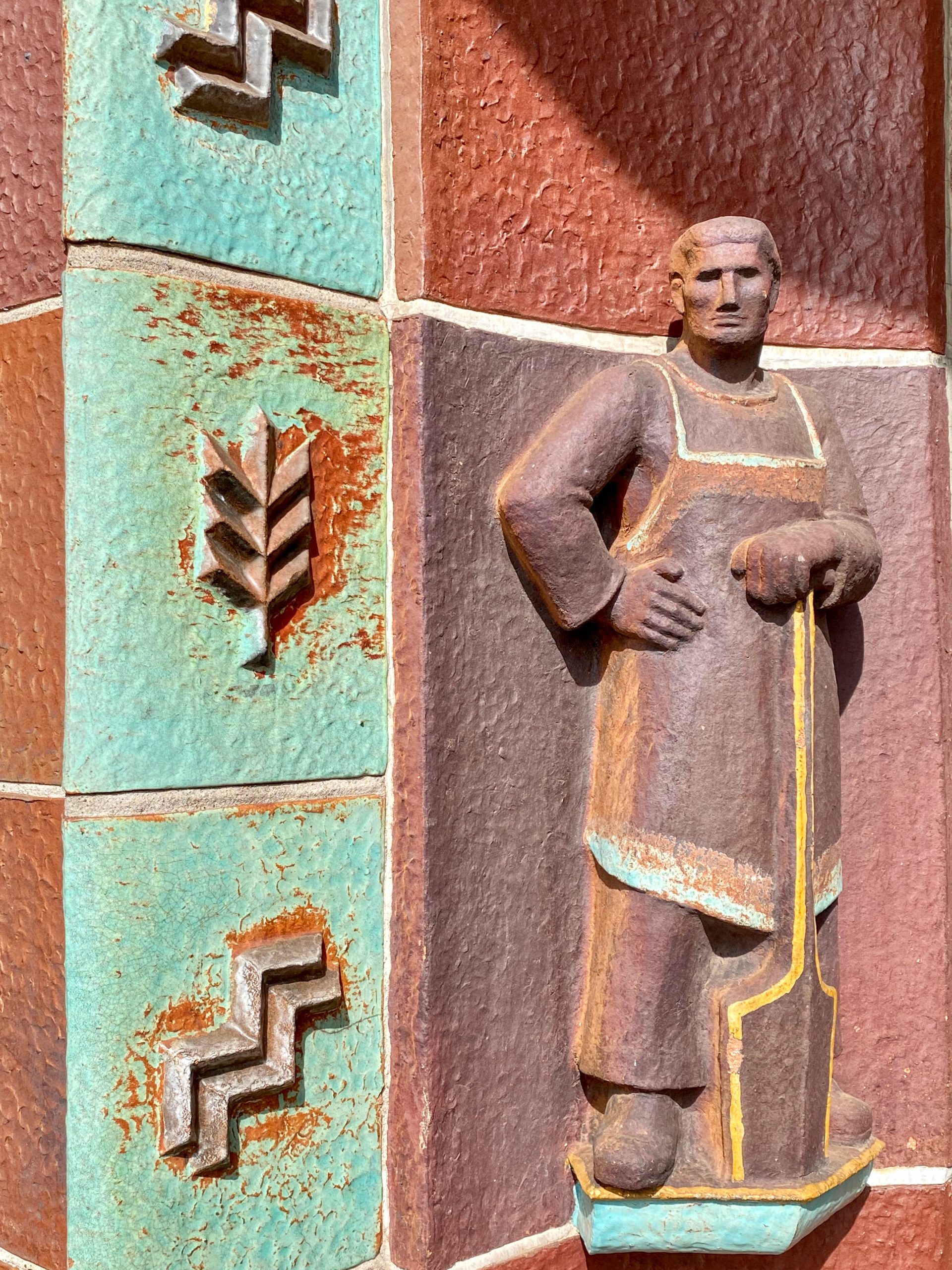
Voss Margarine Factory, 1925-1926. Architects: Henry Grell, Peter Pruter. Photo: Daniela Christmann
Postwar period and present condition
In the 1970s, the Voss margarine factory ran into economic difficulties.
1976 it merged with Bayerische Margarine-Werke München and Holsteinische Margarinewerke Wagner & Co.
Production in Hamburg ceased in 1978.
Since 1981, the entrance building has been listed as a historical monument.
The factory building from 1910 was demolished in 1984. Two years later, the headquarters of a health insurance company was built on the site.
From 1989 to 2006, the entrance building housed the Hamburg Architecture Archive.
Today, the building is part of the administrative building of a health insurance company and is connected to it via a skyway at the level of the upper floor.

